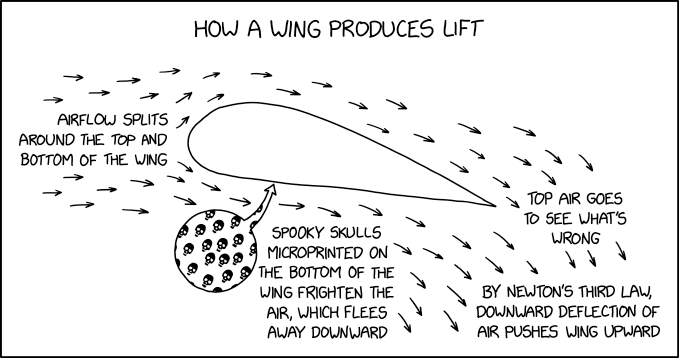
purplepete
Shared posts
Wing Lift
purplepeteActually this is as close to the real answer as what is taught in schools; a more sensible theory can be found at http://milesmathis.com/lift.pdf

Cheap DIY Microscope Sees Individual Atoms
purplepeteScanning Electron Microscope on a budget!
This is not an artist’s rendering, nor a physics simulation. This device held together with hardware-store MDF and eyebolts and connected to a breadboard, is taking pictures of actual atomic structures using actual measurements. All via an 80¢ piezo buzzer? Madness.
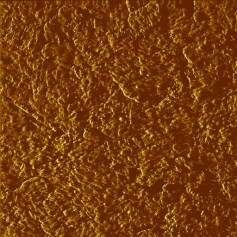
This apparent wizardry is called a scanning tunneling microscope which takes advantage of quantum tunneling. The device brings a needle atomically close to the object to be measured (by hand), applying a small voltage (+-15V), and stopping when it starts to conduct. Depending on the distance between the tip and the target, the voltage varies and does so precisely enough to identify whether an atom is underneath or not, and by how much.
The “pictures” are not photographs like a camera might take from a standard optical microscope, however they are neither guesses nor averages. They are representations of real physical measurements of specific individual atoms as they exist on the infinitesimal area being probed. It “sees” by measuring small voltage changes. Another difference lies in the “scanning.” The probe examines atoms the way one would draw ASCII images – single pixels at a time until an entire atom was drawn. Note that the resolution – as shown in the pictures – is sub-atomic. Sizes of atoms are apparent as are the distances between them. In this they are closer related to the far more expensive Scanning Electron Microscope technology, but are 10-100x zoomier; resolving 0.00000000001m, or 0.00000000039″.
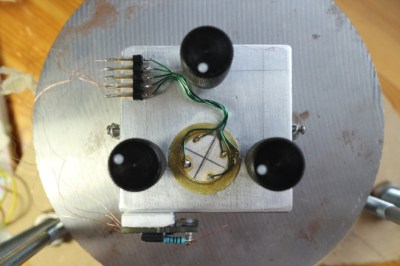
One would presume that dealing with actual atoms requires precision machining vast orders of magnitude beyond the home hobbyist but, no. Any one of us could make this at home or in our hackerspaces, for nearly free. Apparently even sharpening a tip to a single atom is, as [Dan] says “not as hard to achieve as you might think!” You take some tungsten wire and pull on it as you cut so that it shatters diagonally. There are better ways he suggests, but that method is good enough.
The ordinary piezo buzzer that is key to the measurement is chopped into quadrants with an ordinary X-Acto knife by hand. Carefully, because it is fragile, but, nothing more to it than that. There are two better and common methods but they cost hundreds of dollars, not 80 cents. It should be carefully glued since soldering heat will damage it, but, [Dan] soldered his anyway because it was easier.
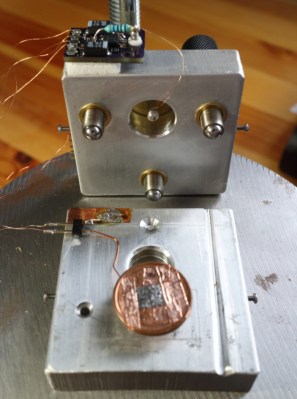
The scan head uses nuts and bolts from McMaster and some scrap aluminum. It is cut no more precisely than with a hacksaw and a file, further machined by an ordinary drill press. The sample is taped down to a penny held in place with a magnet.
“Won’t vibrations utterly swamp the precision required?”, well, [Dan] lives next to both a highway and an airport and all he did was suspend it on springs and a stack of scrap hard drive magnets to clamp oscillations. This is the same technique used on the first STM built in the 1980s that reeled in a Nobel Prize in physics. What looks like the fancy and complicated machined parts are just off-cuts of steel separated by slices of o-ring to soak up some of the shakes.
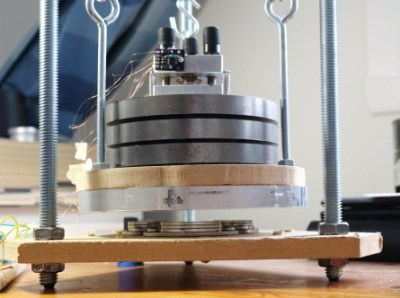
Slap on a power supply and some other trivial electronics and apply some image processing from the open-source Gwyddion software and you are ready to casually inspect individual atoms.
[Dan] is not a complete slacker, he does someday plan on using a stepper motor to bring the probe within fractions of an atom to the material but for now he adjusts it by hand.
The most difficult and expensive part seems to be finding something you can actually measure. The particular type of graphite [Dan] used costs $20 for a playing card size. Gold also works if you can get it flat enough. Most metals are tricky because they require an oxygen-free (vacuum) environment. Most non-metals will not work at all because they are not conductive. And of course, it goes slowly. You are sweeping across the surface like a CRT beam on an old TV, moving and measuring fractions of an atom at a time.
This method is good enough for a couple of hours of scanning before aluminum’s thermal expansion might throw off your results.
Some perspective is in order. Half a century ago, who would have thought that viewing the fundamental building blocks of chemistry through the application of quantum mechanics was easily within the reach of any teenager with a soldering iron, basic hand tools, and a shoestring budget?
Check out [Dan]’s project page for diagrams, explanations, tips, tricks, and links.
Filed under: chemistry hacks, slider, tool hacks

